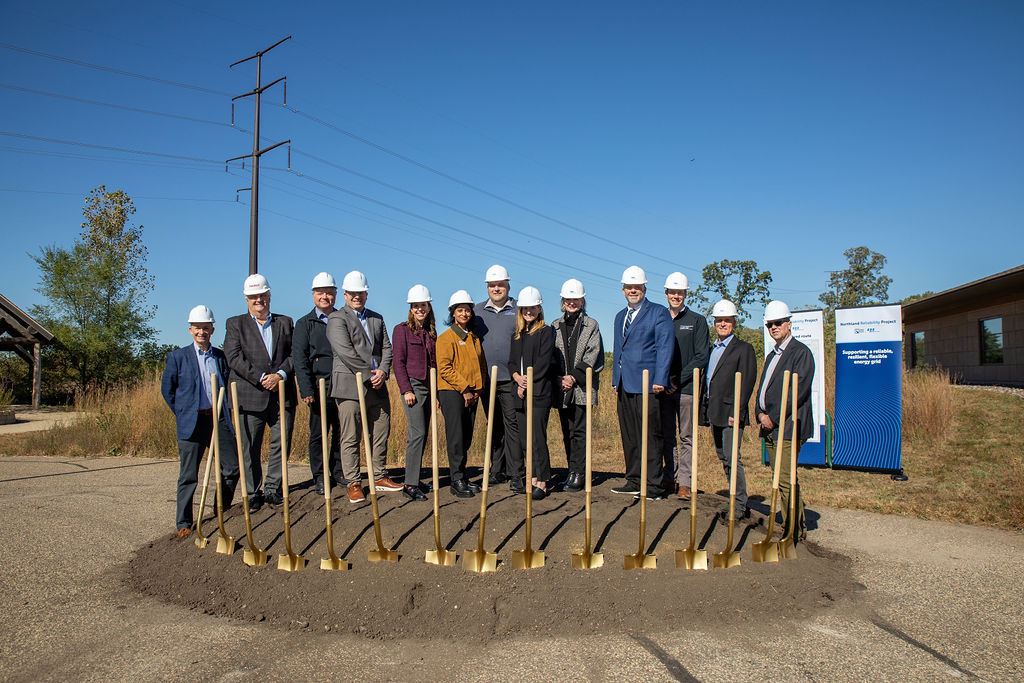The federal funding opportunities provided through the Bipartisan Infrastructure Law (BIL) and Inflation Reduction Act (IRA) are said to be a “once in an era” investment into our nation’s infrastructure and offer the largest opportunity to develop energy infrastructure since the Rural Electrification Act of 1936. Between the two bills, there are hundreds of billions of dollars available in funding opportunities.
An array of opportunities are available specifically for transmission infrastructure with a strong emphasis toward rural America. Several divisions within Great River Energy are prioritizing their focus in the near term on the Grid Resilience and Innovation Partnerships (GRIP) Program, which is named for what it funds and also provides the largest opportunity for investment.
What is exciting about those two bills?
The Department of Energy is charged with implementing these funding opportunities to spur new, smarter technologies. Resiliency, innovation and reliability are the main pillars.
“It’s exciting for everyone right now because the pot is full of money and there’s no winners and losers yet. We’re trying to take all these different options and figure out where our best opportunities lie.”
— Owen Henriksen, transmission strategy specialist at Great River Energy
Henriksen said most of the projects being considered from the transmission standpoint are those that wouldn’t happen without this government funding.
“For the most part, these are things that utilities have started planning for and are being built into the strategic fabric of the future. These are things that we want to do, but might be difficult to justify without the funding,” he said.
Jamie Stallman, energy conservation and optimization specialist at Great River Energy, said that once a potential project is identified, the challenge becomes trying to determine which program presents the best funding opportunity.
“The beauty of all of this is that there are so many different entrance points into these opportunities,” he said. “How you get in is up to you.”
How do they benefit electric cooperatives?
Both laws are assets for Great River Energy and its member-owners. Stallman is looking at the opportunities for members to apply for funding while Henriksen is researching how the bills can benefit Great River Energy transmission projects which, in turn, will benefit members.
The greatest opportunities for member-owners come from the Energy Improvement in Rural or Remote Areas (ERA) Program, which awards several million a year in cost-sharing funds.
Henriksen explained that Great River Energy is in a unique position.
“Great River Energy is situated as perfectly as anybody because we can apply for the really competitive opportunities all the way down to the end user from our member perspective. All of these provide net benefits to our members whether the funding is for transmission, distribution or even energy efficiency rebates at the residential level.”
— Owen Henriksen
What steps are Great River Energy taking in response to these two bills?
A team from representatives across Great River Energy is working to represent Great River Energy as a whole and is aggressively exploring all opportunities in a coordinated manner to determine which projects may qualify for funding. These possible projects come in the areas of transmission, distribution, beneficial electrification, electric vehicles and more.
Henriksen said Great River Energy has already engaged in the stakeholder process for one funding opportunity and hopes to move forward on three others. One project Great River Energy is currently seeking funding for aims to improve grid resilience across a broad swath of its transmission system with a specific focus on protecting against impacts of wildfires, ice and windstorms.
 " data-object-fit="cover">
" data-object-fit="cover">